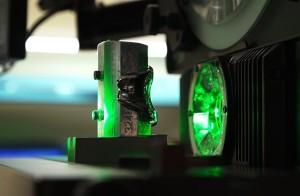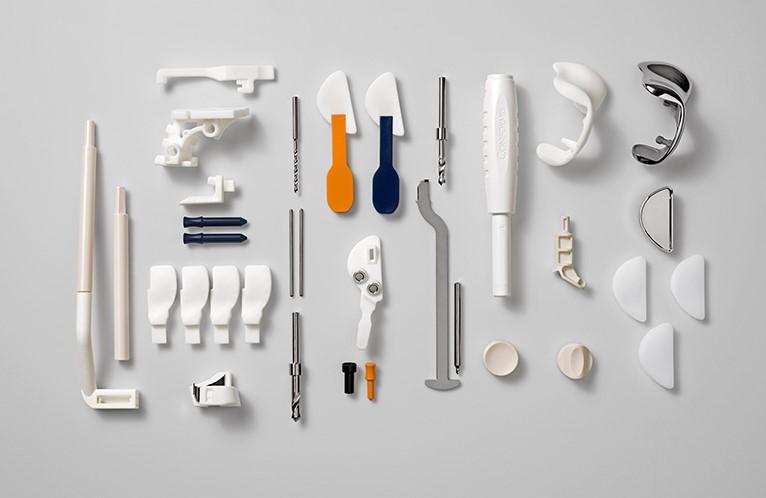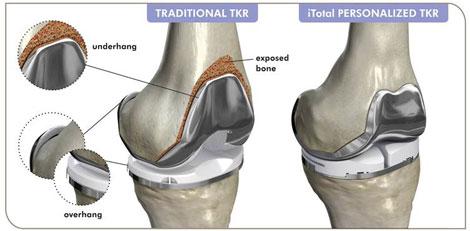 On my 30th birthday, I started having knee trouble. Literally, on my birthday. I was fine the day before, and then I turned 30 and suddenly found it painful to stand up from my desk. I found this joke to be in very poor taste, particularly since it’s been a problem, on and off, since then. Several of my relatives have had to undergo knee surgery, which makes me worry that I’ll end up needing it, too, especially since some recent studies have shown that knee problems can, in some cases, be hereditary. I’m in luck, though, because if I do need a knee surgery, or even a knee replacement at some point, it’ll likely be a lot easier on me than on my parents.
On my 30th birthday, I started having knee trouble. Literally, on my birthday. I was fine the day before, and then I turned 30 and suddenly found it painful to stand up from my desk. I found this joke to be in very poor taste, particularly since it’s been a problem, on and off, since then. Several of my relatives have had to undergo knee surgery, which makes me worry that I’ll end up needing it, too, especially since some recent studies have shown that knee problems can, in some cases, be hereditary. I’m in luck, though, because if I do need a knee surgery, or even a knee replacement at some point, it’ll likely be a lot easier on me than on my parents.
Why’s that? Because of 3D printing, of course. Knee replacements are another of the medical procedures the technology has improved, though they’re a relatively recent addition to the list. The developments in knee surgery are largely thanks to ConforMIS, whose iTotal joint replacement system utilizes 3D printing to create customized knee replacements that perfectly fit each person’s anatomy. The system allows for faster healing, less pain, and greater mobility than the standardized implants that surgeons have been using for years.
ConforMIS’ technology is new to the market, but it’s already showing itself to be remarkably effective. Dr. Bryan Huber and his partner Dr. Brian Aros are currently the only doctors in the state of Vermont to use the iTotal system, and so far, they’re impressed. Dr. Huber, an orthopaedic surgeon with Mansfield Orthopaedics, formerly served on ConforMIS’ scientific advisory board. He has been using the system for four years, well before ConforMIS went public. In those four years, he has gained a reputation for his successful knee replacements; patients needing surgery have traveled from all over the US to see him.Recently, Dr. Huber allowed a reporter from the Vermont independent newspaper Seven Days to observe one of his knee replacement surgeries. The patient was a woman in her sixties, whose knee had worn out prematurely due to her weight. Two months prior to the surgery, a CT scan was taken of the patient’s knee and uploaded to ConforMIS, who used the scan to 3D print an exact replica of the joint. After removing the patient’s kneecap, Dr. Huber would replace it with the cobalt-chromium 3D printed replica.
The new kneecap was not the only thing that was custom-made for the patient – the tools used in the surgery, including jigs, inserts, and other instruments, were designed specifically based on the woman’s anatomy. This fully customized system allowed for Dr. Huber to complete the surgery in less than an hour. The patient, who went into surgery around 10:30 am, was to be up and walking by early evening.
The majority of Dr. Huber’s patients leave the hospital within 24 to 48 hours, which is a much shorter period of time than required by conventional knee replacement surgeries. Several patients have been athletes who have returned to knee-intensive sports such as skiing, snowboarding and bicycling within three months, and fewer than five percent of his patients have required physical rehabilitation.
The advantages of the ConforMIS system aren’t hard to understand. Conventional knee implants are made to fit all patients, which seems insane when you think about it, considering how widely people vary in size and shape. According to Dr. Huber, two-thirds of knee replacements are too big or too small, which limits mobility and causes chronic pain. Furthermore, making them fit at all often requires the removal of additional bone. Dr. Huber is able to preserve 25 to 30 percent more bone than in standard knee replacements, and also greatly reduce blood loss.
“This technology has always made sense to me,” said Dr. Huber. “Why would you want to put something in the knee that’s not anatomic?”
While it may seem incredible that it took so long to develop an effective knee replacement system, something like this really couldn’t have been done without 3D printing. No other technology has made it possible to exactly reproduce patients’ unique body parts, particularly bones and internal organs. For many patients, surgeries like knee replacements have been the lesser of two evils – a surgery will allow them to walk and function, but it will still mean a lifetime of pain and reduced mobility. Now, it’s about as simple as replacing a car part. A part wears out, just order a new one – with the assurance that it will work just as well as the original. Discuss your thoughts on this new technology in the ConforMIS 3D Printed Knee Replacement Implants forum over at 3DPB.com.
Subscribe to Our Email Newsletter
Stay up-to-date on all the latest news from the 3D printing industry and receive information and offers from third party vendors.
You May Also Like
3D Printing Unpeeled: New Arkema Material for HP, Saddle and Macro MEMS
A new Arkema material for MJF is said to reduce costs per part by up to 25% and have an 85% reusability ratio. HP 3D HR PA 12 S has been...
3D Printing News Briefs, January 20, 2024: FDM, LPBF, Underwater 3D Printer, Racing, & More
We’re starting off with a process certification in today’s 3D Printing News Briefs, and then moving on to research about solute trapping, laser powder bed fusion, and then moving on...
3D Printing Webinar and Event Roundup: December 3, 2023
We’ve got plenty of events and webinars coming up for you this week! Quickparts is having a Manufacturing Roadshow, America Makes is holding a Member Town Hall, Stratafest makes two...
Formnext 2023 Day Three: Slam Dunk
I’m high—high on trade show. I’ve met numerous new faces and reconnected with old friends, creating an absolutely wonderful atmosphere. The excitement is palpable over several emerging developments. The high...


































